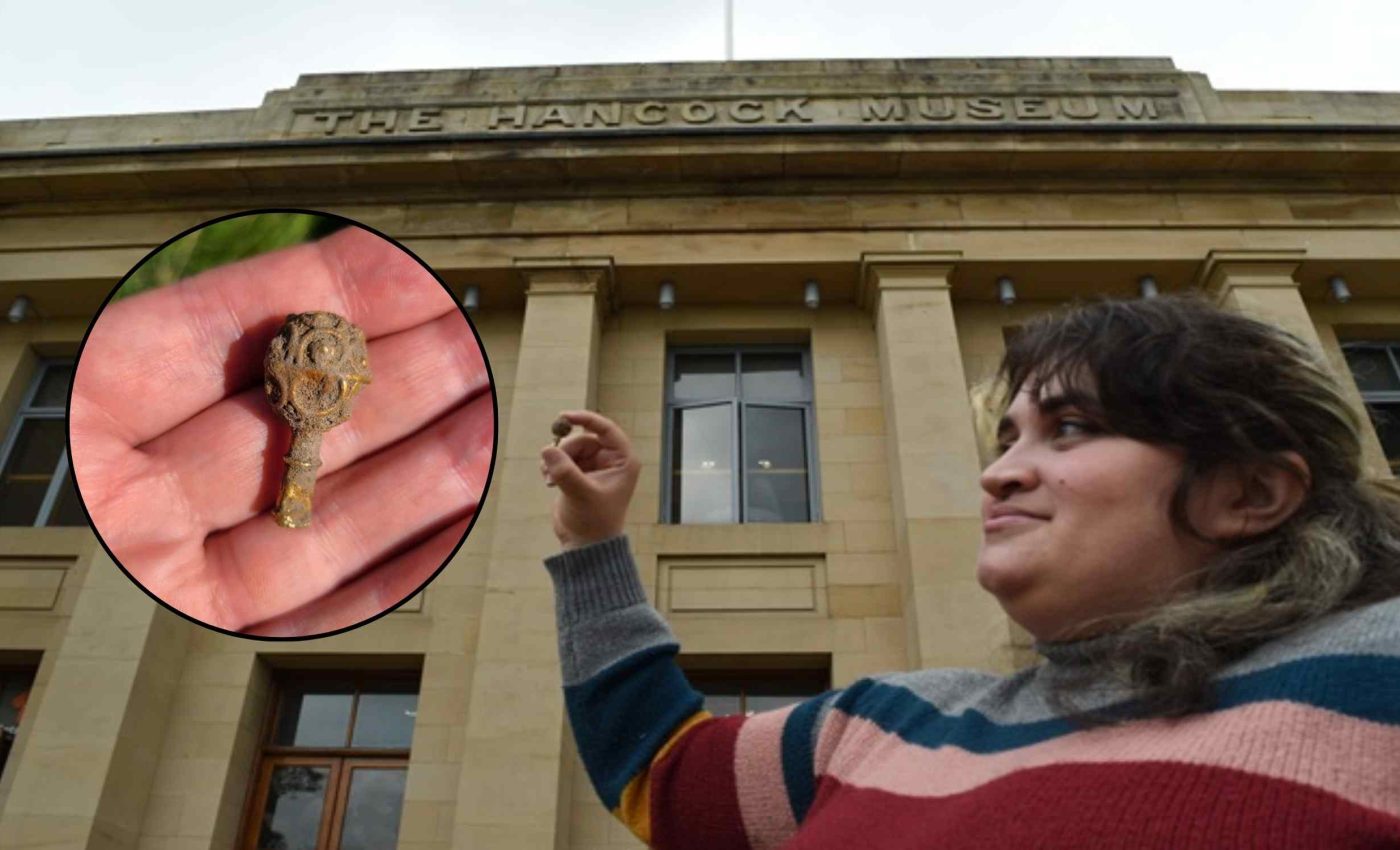
Student finds 1,100-year-old medieval gold jewel on her first excavation in just 90 minutes
A first dig, a first find, and a flash of gold. Within 90 minutes of starting an excavation in Northumberland, a 21-year-old archaeology student uncovered a small 9th century gold object during her very first field day.
The piece measures about 1.6 inches long and dates to the early medieval period, which puts it roughly 1,100 years old.
The dig and the team
The find came to light near Dere Street, a Roman road that once linked northern England to Scotland and remained important long after imperial rule ended. In this stretch of country, even parts of today’s A68 follow that ancient line.
Professor James Gerrard of Newcastle University (NCL) led the excavation in Redesdale in July 2025. He worked alongside students and archaeologists from North East Museums.
“I couldn’t believe I’d found something so quickly in my first ever excavation. It was actually quite overwhelming,” said Yara Souza, an Archaeology BA Honours student at Newcastle University.
What turned up in the trench
The object is compact, gold, and finished with a decorative finial at one end. Its size, shape, and fine workmanship point to a high-status owner in the period when small personal items spoke loudly about rank and role.
It also echoes an earlier find at the same spot. In 2021, a metal detectorist uncovered a similar gold piece that specialists identified as a ball-headed pin, a dress accessory commonly dated to about A.D. 800 to 1000.
Why this tiny object matters
The location is not a throwaway detail. Dere Street connected powerful centers across the region, tying the borderlands into wider networks of movement, authority, and worship.
Along that route stood Jedburgh, later home to a major medieval abbey and a longstanding religious hub. Hexham likewise developed around a cathedral community that reaches back to the 7th century and remained a prominent Christian site.
Gold, status, and church power
Gold was not a casual material in early medieval Britain. It signaled authority, wealth, and often a connection to church or royal settings where liturgy and status overlapped.
Pins and related dress fittings help archaeologists read that world. The Portable Antiquities Scheme has cataloged hundreds of Anglo-Saxon pins and classifies their head shapes, including ball-headed forms, to understand how people dressed and displayed rank in daily life.
Two pieces, one story
With two gold objects now recorded from the same place, specialists are weighing whether they belonged together or served related functions. Their near-matching size and style make a shared purpose plausible without forcing a conclusion.
Dere Street’s long life as a thoroughfare adds context. A road that stayed busy for centuries would have carried clerics, nobles, traders, and travelers, the very people most likely to own or carry gold.
Ritual deposit or lost possession
“We know that Dere Street continued to be a major thoroughfare long after the Romans. It is possible that this pair of objects may have been deliberately buried,” said Gerrard.
Scholars note that special deposits of valuables did occur in early medieval societies, though evidence outside cemeteries is often sparse and debated. A careful site analysis will matter here more than any single theory.
Tools that make finds count
Next steps run through the Portable Antiquities Scheme, a national recording program run by the British Museum that logs and photographs archaeological finds made by the public and professionals. That public database helps researchers compare objects by type, date, and place.
“This project is a great example of how metal detectorists and archaeologists can come together to add to our understanding of the past in Northumberland,” said Andrew Agate, the Finds Liaison Officer for North East England.
Looking ahead without overreach
The paired finds will undergo detailed study, from craft technique to wear traces that show how they were used. Context from soil layers and nearby features will help confirm whether the pieces were buried on purpose or simply lost in transit.
Whatever the verdict, the discovery already does real work. It sharpens the picture of a corridor where faith, power, and travel met, and it anchors a student’s first day in the field to a much older story told in inches of soil and a few grams of gold.
Photo: Portable Antiquities Program/University of Newcastle.
—–
Like what you read? Subscribe to our newsletter for engaging articles, exclusive content, and the latest updates.
Check us out on EarthSnap, a free app brought to you by Eric Ralls and Earth.com.
—–













